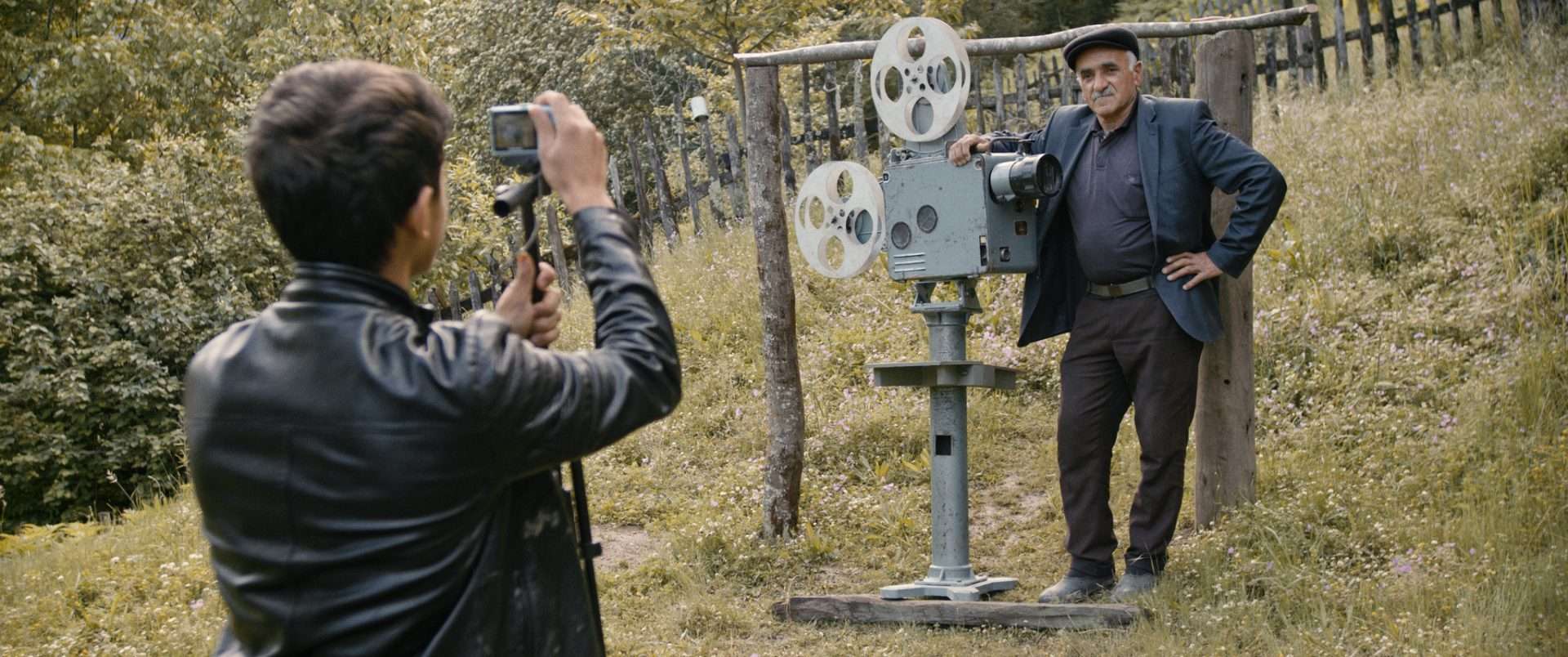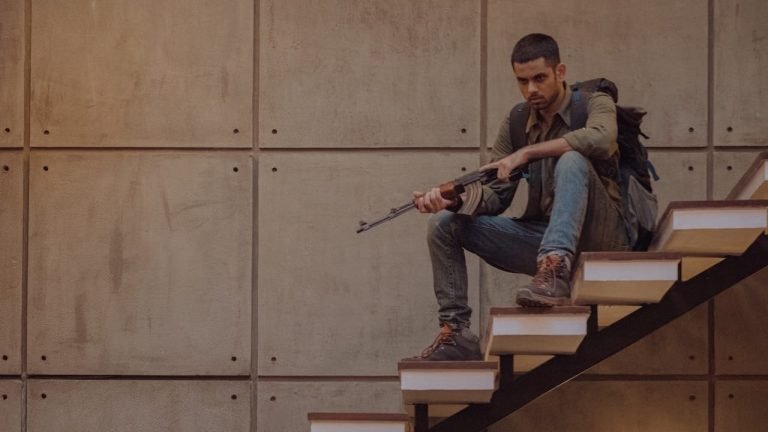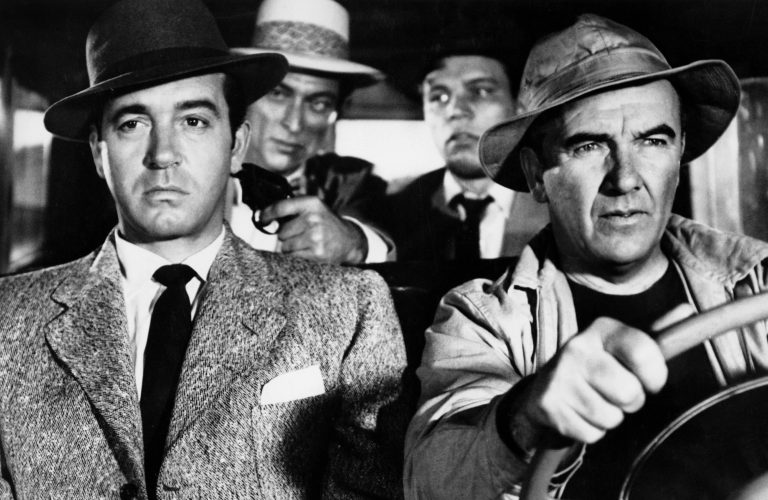Azeri filmmaker Orkhan Aghazadeh’s The Return of the Projectionist is a parable of cinema being handed from one generation to the other and vice versa, in changing shape and form, grounded in an unshakable, absolute, and uncompromising love for the medium. When the once-upon-a-time projectionist aging Samid digs out the projector, it is all musty and dust-crusted. While the film never tells us when and how the cinema viewing experience folded up in the remote Azeri village, we gauge that the interval may have been long but has only enhanced the thirst of the community for its return.
So, there is no immediate opposition when Samid proposes to revive the culture. The villagers longingly recount memories of the times when they would huddle in a tent in the thick of winter to watch a film. There’s an absolutely lovely moment when they burst out singing a song from an old Hindi film that was a raging hit in the village, Disco Dancer.
In a poignant confession, Samid shares how he misses the sound the projector made when it was functional. The lullaby-like sound comforted him. Even if there is a wave of enthusiasm that he sparks in his community, it is up to him to turn his proposal into reality. Since the projector’s lamp has gone kaput, he has to get hold of a new one. For an internet connection to register, he has to hike a distance that’d enable an e-order of the bulb being shipped all the way from Lithuania. Samid finds an ally in one of the local teenagers, Ayaz.
Ayaz is making his own short animated film about the Russian aggression on Ukraine. He has just got his smartphone to do that. Together with Samid, he creates scenes to be transposed into animation. When the two embark on recording sounds, the delightful, frustrating, and exulting adventure and experimentation embedded in movie-making find utterance.
At its heart, The Return of the Projectionist is a perceptive, engaging, and generously attentive dialogue between two generations, meditating on the two and drawing the best from one another. There are intermittent conflicts and some chafing, but ultimately, Samid and Ayaz are kindred souls whose deep passion for film is strong enough to bat away any technological hindrance that may and does prop up. The core commitment binding them equalizes them and powers them to march ahead in individual and shared pursuits.
Samid is cooped up in grief over the sudden passing of his son, Polad. It has been two years. Aghazadeh doesn’t divulge much about Samid’s family except that he has chosen to disconnect himself and lead a solitary life in the village. He pays no heed to the sour gossip going around in the village, casting aspersions on him for not being with his family. In Ayaz, Samid retrieves remnants of his late son, eagerly bonding with him. Some of his aching, repressed loneliness lifts when he’s with Ayaz. There is the opportunity for sentimentality, but Aghazadeh mercifully never indulges in it.

Their scenes together, as they help out each other, brim with warmth, camaraderie, and an inherent mutual respect. Ayaz may get fleetingly vexed and upset with Samid, but he returns to him, deeply aware of the knowledge and value Samid possesses in his old equipment. Their access to resources is minimal, but they don’t get bogged down by it.
Samid especially doesn’t allow himself to get defeated by any unexpected inconvenience. He may have slipped out of his routine for a while, but he has done this long enough to find ways of working himself out of disruptions that would crush a novice like Ayaz. He, too, obviously started out as a young boy one day, albeit the technological progress between his and Ayaz’s formative years is undeniably immense. To Samid, the boy could just as well be his own mirror of the future.
Aghazadeh depicts the village as one tightly cloistered from the external world. The topical conflict between Azerbaijan and Armenia receives only a cursory mention. It’d be unfair to accuse the film of an omission on such a part as the director establishes the precepts of his film right from the beginning. The filmmaking is polished, perhaps a tad too much for a documentary, and many scenes, despite being eminently watchable, teeter close to being artfully curated and mounted.
When the film settles for a few quiet moments of Samid reposing by himself in the woods, the design feels jarringly obvious. But there are pockets of sharp observation into the community. When Samid suggests to a group of village elders that there are scenes in the film selected for screening that could be explicitly provocative, initially, they brush past his worries. After the said scene is shown however, there’s a flurry of instant protest and rejection.
That the film should have a high moral code is the biggest priority dictated by the council. Women are noticeably excluded from such decision-making. They can only attend the screening only with the permission of their husbands or men in their household. The social fabric is insightfully knit into the film’s portrait of a community. With such revealing shades and a sublime, exquisitely playful coda, The Return of the Projectionist rises above the stray artifice, emerging as subtly eloquent and urgently pragmatic.




![Milestone [2021] Netflix Review – Harsh and humane, Ivan Ayr’s film richly mines inner desolation](https://79468c92.delivery.rocketcdn.me/wp-content/uploads/2021/05/Milestone-Meel-Pathar-3-highonfilms-768x480.jpg)




![Therapy Dogs [2022] ‘Slamdance’ Review- A dull blur of Energy & Chaos that is ultimately feeble](https://79468c92.delivery.rocketcdn.me/wp-content/uploads/2022/01/Therapy-Dogs-2022-768x432.jpg)